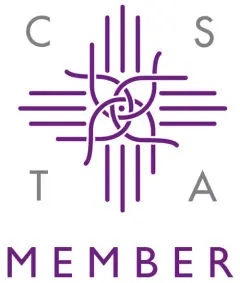
Craniosacral Therapy (CST) is a gentle, hands-on method designed to release tension in the soft tissues that surround the central nervous system. At the core of this approach lies a highly effective technique known as the 10-step protocol.
This protocol is not just a technique—it’s a therapeutic journey. Each step is designed to assess and gently release restrictions in the craniosacral system, promoting balance, relaxation, and overall wellness.
Before diving into the protocol, it’s essential to understand the craniosacral system. It includes the membranes and cerebrospinal fluid (CSF) that surround and protect the brain and spinal cord. Any restrictions or imbalances in this system can lead to a wide range of health issues, including headaches, fatigue, chronic pain, stress-related disorders, and more.
Craniosacral Therapy uses light touch—typically no more than 5 grams of pressure—to work with the body’s natural rhythms and facilitate self-healing.
Here’s a breakdown of the 10 steps commonly used in CST to assess and treat the craniosacral system:
The therapist begins at the base of the skull, placing their hands gently under the occiput. This helps induce a "still point," a momentary pause in the craniosacral rhythm, which allows the body to shift into a deep state of relaxation and reset its natural healing rhythm.
There are multiple diaphragms in the body that affect craniosacral rhythm. These include:
Releasing tension in these areas allows for better movement of fluids and energy through the body.
The thoracic inlet (at the base of the neck) often holds a lot of stress and tension. Releasing this area helps improve circulation between the head and heart and enhances lymphatic flow.
By gently mobilizing the rib cage and diaphragm, the therapist helps improve breathing, organ function, and reduces tension held in the solar plexus area.
This step targets the muscles and fascia of the lower pelvic region. Tension here can restrict cerebrospinal fluid flow and contribute to lower back or pelvic issues.
This technique involves gently rocking the sacrum while the client lies on their back. The goal is to release restrictions along the dural tube (which houses the spinal cord) and promote fluid movement between the brain and spinal cord.
Balancing the sacrum allows for better communication between the lower spine and cranial structures. It plays a critical role in spinal alignment and nerve function.
The sphenoid bone, located behind the eyes, is a key connector between the skull and the brain. Tension here can affect vision, hormonal balance, and overall cranial mobility. Gentle manipulation of this bone helps bring cranial bones into harmony.
The temporal bones house structures vital to hearing and balance. Releasing restrictions in these bones can help with ear issues, jaw pain, and vertigo.
The final step focuses on the fourth ventricle of the brain. With precise hand positioning at the occiput, the therapist induces another still point. This step is especially powerful for calming the nervous system, promoting deep relaxation, and enhancing immune function.
The 10-step protocol offers consistency and clarity to Craniosacral Therapy sessions. It serves as both an assessment and treatment tool, helping the practitioner identify restrictions, address them gently, and monitor the body’s response.
This approach is especially beneficial for:
Craniosacral Therapy is a subtle yet powerful practice that supports the body’s ability to heal itself. The 10-step protocol is a foundational method that provides structure while allowing for flexibility based on each client’s needs.
Whether you’re new to CST or exploring advanced techniques, this protocol is an essential part of the therapist’s toolkit. With just a gentle touch, CST has the power to create profound shifts in the body, mind, and spirit.
Home Clinic ( Purley)
6 Hillcrest Road, CR82JE, Purley
£75 – 1 hour session
"I would really recommend TheraVibe Craniosacral Therapy by Rucha as I went to her with severe upper back pain and felt relieved in only 1 sitting with her."
